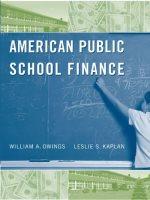
Question 4 Currently, the economy has a risk-free asset that yields 2% return and a risky asset with expected return of 8%, with standard deviation of 40%. An investor has to make a portfolio allocation using these assets. a) Suppose the investor has mean-variance preferences that we have seen in the lectures with risk aversion coefficient of A = 1.5. In her optimal portfolio, what share is allocated to the risky asset? What is the mean-variance utility the investor gets from holding this portfolio? (5 marks) b) Now suppose that the standard deviation of the risky asset return goes down to 20% (e.g. due to improved diversification opportunities), but this change does not affect the risk-free rate nor the expected return of the risky asset. Determine the new optimal portfolio share of the risky asset, and the utility the investor gets from this portfolio. Explain intuitively why the risky asset share and the investor's utility has changed. (5 marks) c) When the risk of the risky asset goes down, which type of investor gains most: conservative (relatively risk-averse) or aggressive (relatively risk-tolerant) investors? To answer this, repeat questions a) and b) for a risk tolerant investor with A = 0.5, and compare with what you found above. Write the utility function in terms of y and take the difference between the two levels of utility. (10 marks) Question 4 Currently, the economy has a risk-free asset that yields 2% return and a risky asset with expected return of 8%, with standard deviation of 40%. An investor has to make a portfolio allocation using these assets. a) Suppose the investor has mean-variance preferences that we have seen in the lectures with risk aversion coefficient of A = 1.5. In her optimal portfolio, what share is allocated to the risky asset? What is the mean-variance utility the investor gets from holding this portfolio? (5 marks) b) Now suppose that the standard deviation of the risky asset return goes down to 20% (e.g. due to improved diversification opportunities), but this change does not affect the risk-free rate nor the expected return of the risky asset. Determine the new optimal portfolio share of the risky asset, and the utility the investor gets from this portfolio. Explain intuitively why the risky asset share and the investor's utility has changed. (5 marks) c) When the risk of the risky asset goes down, which type of investor gains most: conservative (relatively risk-averse) or aggressive (relatively risk-tolerant) investors? To answer this, repeat questions a) and b) for a risk tolerant investor with A = 0.5, and compare with what you found above. Write the utility function in terms of y and take the difference between the two levels of utility. (10 marks)







